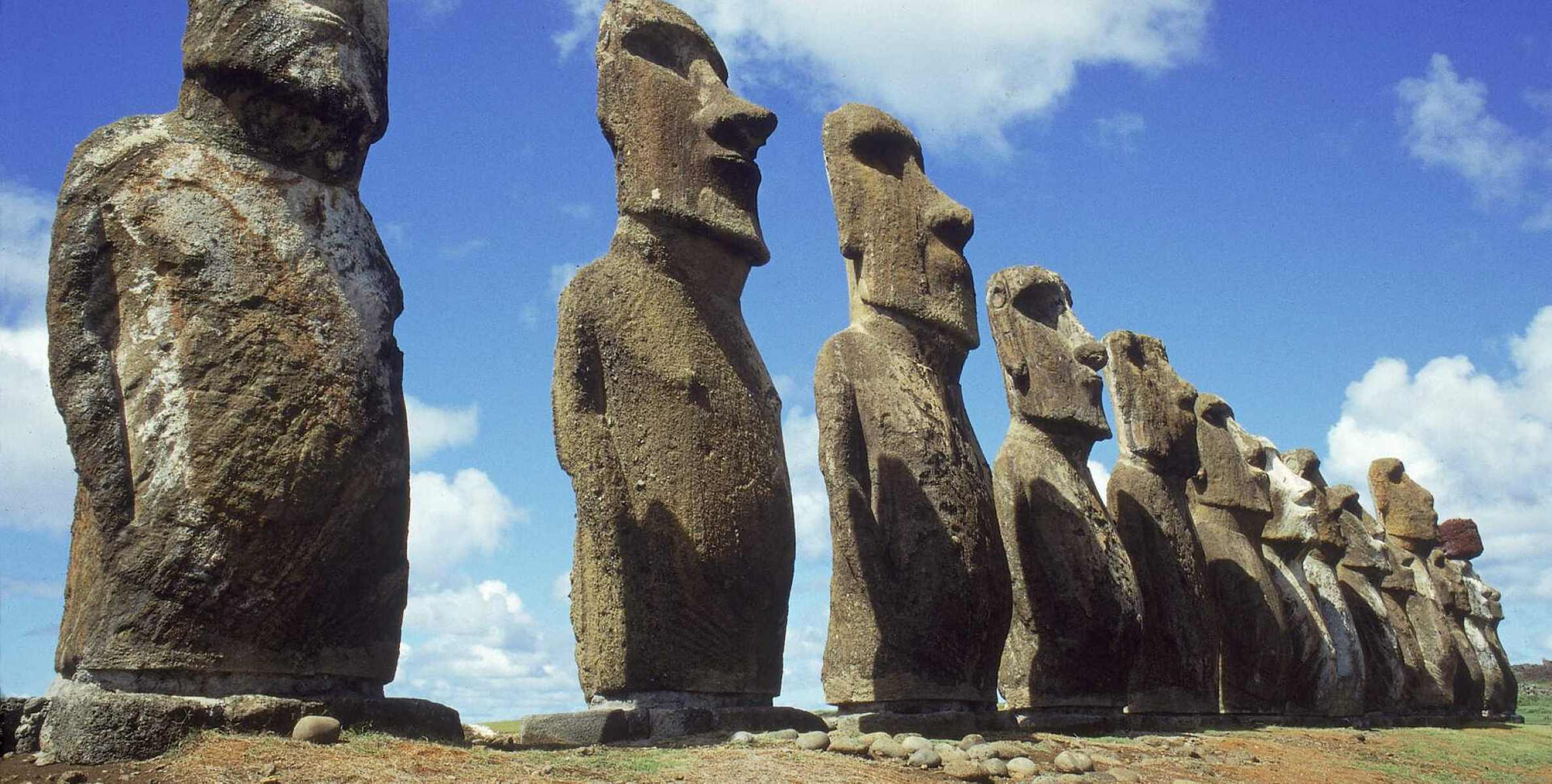Mysteries Of Rapa Nui Easter Island Moai

Have you ever wondered about the mysteries of Rapa Nui? This remote island, also known as Easter Island, is famous for its giant stone statues called Moai. These statues, carved from volcanic rock, have puzzled historians and archaeologists for centuries. How did the islanders move these massive figures across the island without modern technology? What purpose did they serve? Some believe the Moai were created to honor ancestors, while others think they had spiritual significance. Join us as we delve into the fascinating history, culture, and theories surrounding these enigmatic statues. Get ready to uncover the secrets of Rapa Nui!
Mysteries of Rapa Nui Easter Island Moai
Easter Island, also known as Rapa Nui, is a remote volcanic island in Polynesia. Famous for its mysterious Moai statues, this island holds many secrets waiting to be uncovered. Let's explore some of the most intriguing spots on this enigmatic island.
The Quarry at Rano Raraku
Rano Raraku is the volcanic crater where most of the Moai were carved. This site offers a glimpse into the craftsmanship and dedication of the Rapa Nui people.
- Rano Raraku Crater: The birthplace of the Moai. Here, you can see unfinished statues still attached to the rock, offering insight into the carving process.
- Moai Quarry: Scattered around the quarry are numerous Moai in various stages of completion. It's like stepping into an ancient workshop frozen in time.
- Tukuturi Moai: Unique among the Moai, Tukuturi is kneeling, unlike the others. This statue raises questions about its purpose and the people who created it.
Ahu Tongariki
Ahu Tongariki is the largest ceremonial platform on Easter Island. It showcases the grandeur and significance of the Moai in Rapa Nui culture.
- 15 Restored Moai: The platform holds 15 Moai, restored to their original standing positions. It's the most impressive display of these statues on the island.
- Sunrise at Tongariki: Watching the sunrise behind the Moai at Tongariki is a magical experience. The statues cast long shadows, adding to their mystique.
- Tsunami Survivor: In 1960, a tsunami swept the Moai off the platform. Their restoration is a testament to the resilience of the Rapa Nui people.
Orongo Ceremonial Village
Orongo is a village perched on the edge of a volcanic crater. It was the center of the birdman cult, a fascinating aspect of Rapa Nui's history.
- Birdman Petroglyphs: The village is adorned with petroglyphs depicting the birdman, a key figure in the island's mythology.
- Motu Nui Islet: Visible from Orongo, this islet was central to the birdman competition. Contestants swam to Motu Nui to retrieve the first egg of the season.
- Stone Houses: The village's stone houses, with their unique architecture, offer a glimpse into the lives of the birdman cult participants.
Anakena Beach
Anakena Beach is not only a beautiful spot for relaxation but also a site of historical importance. It is believed to be the landing place of the island's first settlers.
- Ahu Nau Nau: This platform features seven Moai, some of which still have their topknots, or pukao, made of red scoria.
- White Sand Beach: The beach's white sand and turquoise waters provide a stark contrast to the island's rugged terrain.
- Legend of Hotu Matu'a: According to legend, Hotu Matu'a, the first king of Rapa Nui, landed at Anakena, making it a site of great cultural significance.
Puna Pau Quarry
Puna Pau is the quarry where the red scoria used for the Moai's topknots was sourced. This site adds another layer to the story of the Moai.
- Red Scoria Pits: The pits where the red scoria was extracted are still visible, showing the effort involved in creating the topknots.
- Scattered Pukao: Around the quarry, you can find unfinished and abandoned pukao, giving a sense of the scale of production.
- Panoramic Views: From Puna Pau, you can enjoy panoramic views of the island, providing a different perspective on the Moai's placement.
Rapa Nui National Park
Rapa Nui National Park encompasses many of the island's key archaeological sites. It's a UNESCO World Heritage site, preserving the island's rich history.
- Ahu Akivi: Unlike other Moai, the seven statues at Ahu Akivi face the ocean, believed to represent the seven explorers sent by Hotu Matu'a.
- Vaihu: This site features toppled Moai, offering a stark reminder of the island's turbulent past.
- Hanga Roa: The island's main village, Hanga Roa, is the gateway to exploring Rapa Nui. It offers museums, shops, and restaurants, blending modern life with ancient history.
The Enduring Allure of Rapa Nui
Rapa Nui, or Easter Island, remains a place of wonder. The Moai statues stand as silent guardians of a rich, mysterious past. These stone giants, carved by the Rapa Nui people, continue to intrigue visitors from around the world. The island's remote location adds to its mystique, making it a unique destination for those seeking adventure and history.
Exploring Rapa Nui offers more than just viewing the Moai. The island's volcanic landscapes, ancient petroglyphs, and vibrant culture provide a full experience. Whether hiking up Rano Raraku, the quarry where the Moai were carved, or participating in local festivals, there's always something to discover.
Rapa Nui's mysteries may never be fully solved, but that's part of its charm. The island invites you to explore, learn, and be amazed by its enduring allure.

